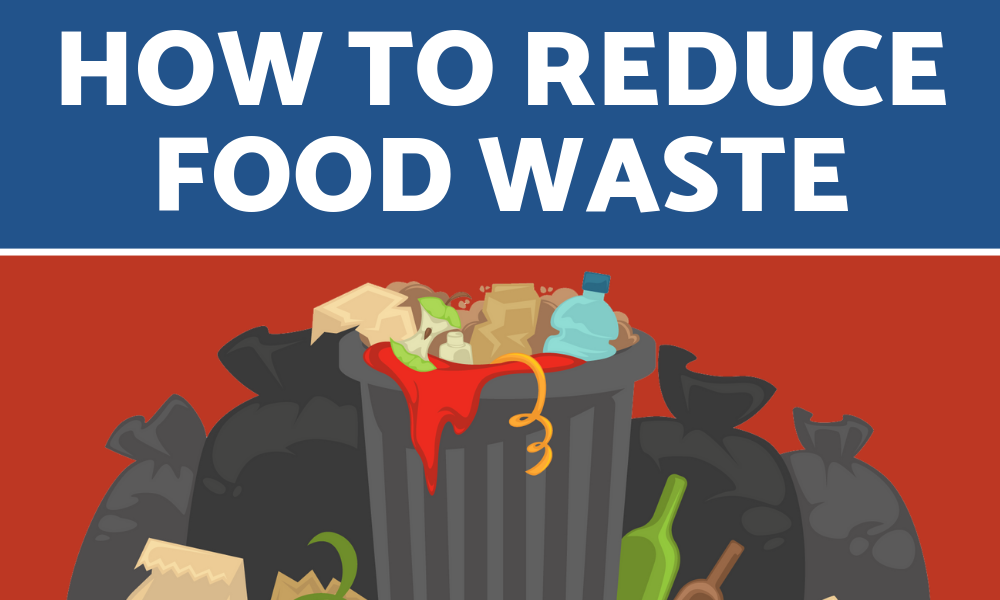More and more directors and kitchen staff are becoming aware of the amount of food waste in their kitchens. Met with the pressures of federal guidelines, people in the foodservice industry are having a difficult time reducing waste while trying to stay compliant.
Even with the standards aiming to help increase consumption, the percentage of vegetables wasted is 60%, while the fruit is at 40%. The amount of vegetables wasted has reduced by 15% since the new USDA standards went into effect in 2012 while the fruit waste has remained relatively the same.
Why is Waste Bad?
When a student is taking the food, but not consuming the food, this is nutritional waste. The student is not getting the nutrient intake they would have if they were to have consumed the item. This problem is becoming very verbalized among the foodservice industry and it is time to start addressing it!

In addition to the nutrient loss for students, waste plays a big role in economic loss for districts.
Based on a study in 2013, “The costs associated with discarded foods are high; if translated nationally for school lunches, roughly $1,238,846,400 annually is wasted.” Since cutting down food waste would also cut down food costs, it is important to learn how to conduct proper analysis of your past data of your menu items, so you can better plan a menu!
The USDA reimbursement requirement is that students must take at least three out of five categories for lunch, while at least one of those choices must be a fruit or vegetable. Aiming for the federal government to cover a “reimbursable meal,” staff often urge students to take more than they would have chosen otherwise. In turn, people in the foodservice industry fear they are teaching kids to throw away uneaten food.
Any amount of food waste can be reduced. It is important to be aware of the amount of food waste that is being produced by your kitchens, so you can take appropriate measures at reducing it.
What are simple measures your district can take to begin?
As a foodservice director, you have the power to plan effectively. By using the right tools, you can analyze historical data and notice trends across time. For example, maybe in the Fall of 2018, you served turkey burgers and 3 months later, you ran a usage report for the turkey burgers – showing the difference between the amount you prepared and the amount you served. This simple report could give you valuable insight into the usage of the turkey burgers. If the amount of turkey burgers prepared is continuously higher than the amount served, you can replace your entree item for something the kids like in the future.
Finding and analyzing the data of your menu items can help you plan better, therefore reducing the gap between the number of turkey burgers prepared versus the number of turkey burgers being served. This not only helps reduce waste, but helps reduce costs.

It is important to look at the numbers you have, so you can make better decisions in the future. Health-e Pro can calculate the cost of waste and leftovers from your kitchen by integrating production records and the pricing of the products! By running a simple report, Health-e Pro gives you the insight you need to make more informed decisions about your menu.
Let’s look at what one district did to reduce waste in their schools?
First, let’s take a look at how on school district in California has redefined what success means in reducing school nutrition waste. Oakland Unified School District hired a sustainability manager, Nancy Deming, to help make sustainability a priority and reduce the amount of food waste coming from the schools in the district.
One of the major procedures Nancy has highlighted is share tables, which are actually endorsed by USDA. Other measures the district has taken are using compost bins and donating food to homeless shelters.
Overcoming obstacles can make some districts shy away from any sort of new policy or procedure, so teamwork is key when taking on new projects, so that any obstacles faced can be addressed as a team!

One challenge Oakland Unified School District faced was having fruit with peels on the share tables. Being concerned with the spread of germs and norovirus, the local health department only wanted packaged food to be shared on the table, but Nancy created an agreement with them saying if there is a case of norovirus, the share table goes away.
Nancy’s advice on share tables: pay attention to detail and make them a focal point.
Share tables not only reduce waste, but also teaches kids not to throw away food they just don’t want to eat. We are so proud of Oakland Unified School District in making an impact! Way to go!
If you want to learn more about Nancy Deming and her roadmap to reduce waste, you can visit her page here.
What are other fun ideas that can be taken to reduce food waste?
The first is by reducing the amount of uneaten food in a different way–other than throwing it away. This can be done using share tables, composting, or donations. Another way to reduce food waste is to increase consumption. The following are suggestions from the Smarter Lunchroom Strategies:
- Increasing Meal time
- Rename vegetables and fruit to something fun
- Slice the fruit for convenience
- Pair vegetables with a fun dip, such as hummus or greek dip
- Taste test new fruits or vegetables!
Small steps can add up to big savings. What small step will you take today?

